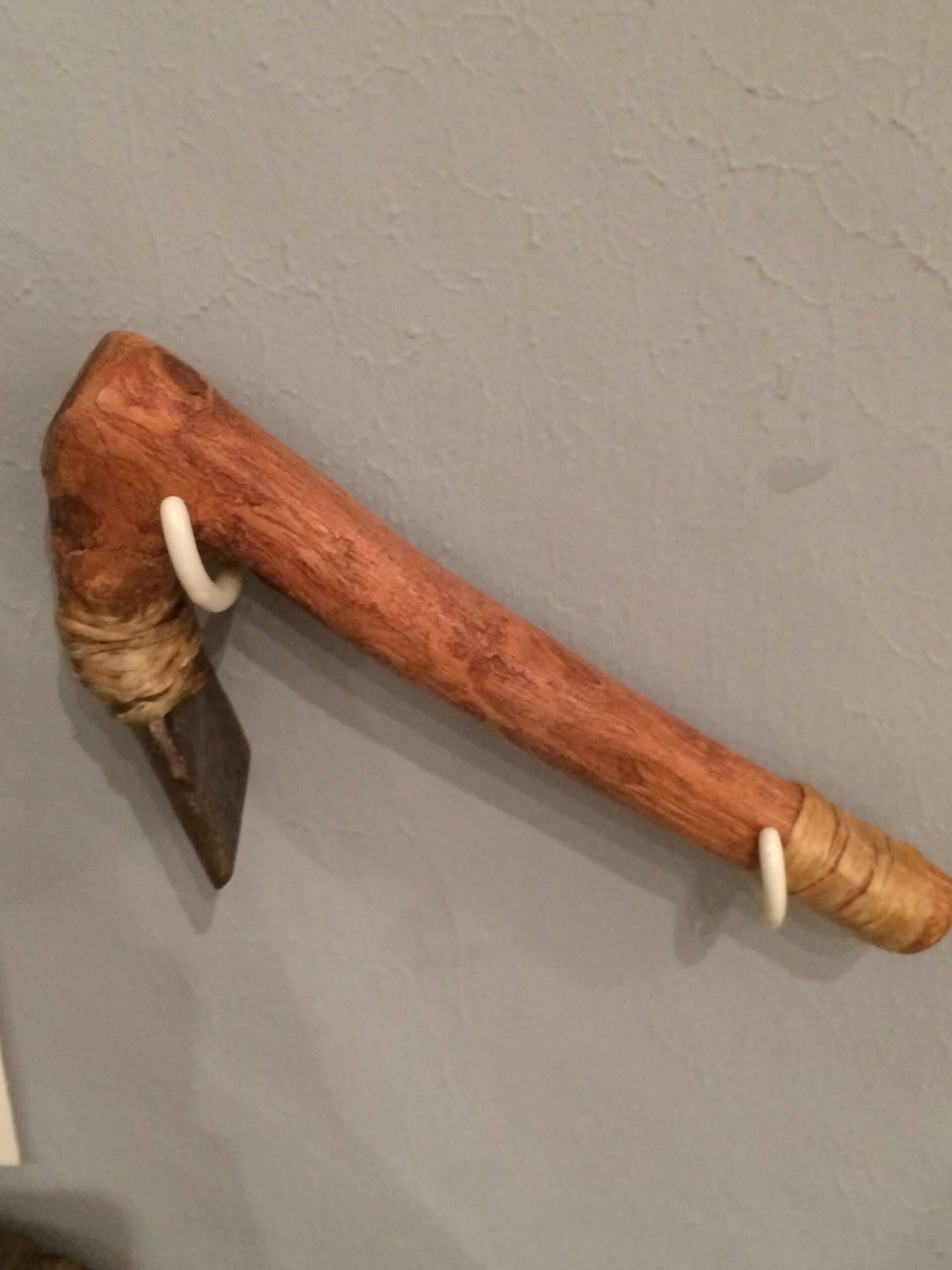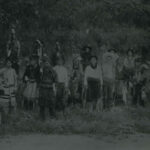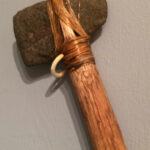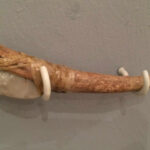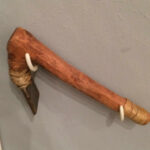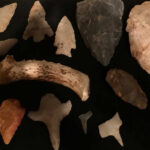Featured in the Gann Museum is a section of artifacts from the Native Americans of the Quapaw and Caddo tribes that once resided in the area.
The Quapaw of this area were first recorded in historical documentation in 1673 by the French who called them by the name “Arkansas” meaning “People of the South Wind”. It is from this word that both the Arkansas River and State were named for. At this time the Quapaw were divided among both the Mississippi and Arkansas River in four villages . Throughout the changes that came to the Arkansas area between the time in which the French discovered the tribe and the time of the Louisiana Purchase the population of the Quapaw change drastically. From a population of 3,500 to 7,500 when the French first came in 1673 to less than 600 due to many outbreaks of smallpox. This led to a joining of the remaining villages. However, this did not change the fundamental aspects of the Quapaw’s culture. The tribe, like many other Native American Tribes, divided labor by gender. The men were warriors and hunters while the women were farmers and gathers. A few examples of the tools that were used in their day to day lives can be found below.
From 1818 to 1833 the nation struggled in conflicts over territory with the settlers of the area. Being displaced multiple times until finally signing the Treaty of 1833 which moved many of the population to northeastern corner of the Indian Territory. Not all members of the tribe followed but today most of the Quapaw Nation live in northeastern Oklahoma with the tribal headquarters in Quapaw, Oklahoma.
The Caddo were a prehistoric tribe that devolved a regional variant of the Mississippian tradition in southwest Arkansas and in parts of Louisiana, Oklahoma, and Texas between AD 800 and 1100. Archaeologists identify the tribe’s culture through artifacts of pottery and flat-top mounds that were used as burial sites.
With these archaeologists have found parallels between these features and European descriptions of historic Caddo tribes that once lived in the area between the 1600s and 1700s that were likely the ancestors of the modern day Caddo Nations. The Caddo nation of Arkansas develop along side local tradition people known as Fourche Maline though it is likely that changes among them were by cultural practices in the Plum Bayou located in central Arkansas. The mounds are the earliest concrete evidence that has been found regarding the Caddo.
It is thought that the Caddo developed a farming lifestyle based on the findings of domesticated plants. Caddo farmers used simple tools for digging made of shell, wood, and bone to cultivate crops. There is also evidence that the Caddo were skilled potters based on the bowls and jars of various size and uses that have been found. Starting in 1400 many changes began for the Caddo culture. The most obvious of these changes being with the mounds they are known for. Their ceremonies became more extravagant in some places while in others the use of them stopped all together. New pottery designs also came into use at this time which leads Archaeologists to believe new cultural beliefs and practices came about. The last known record of the Caddo was recorded in 1790 where a group was living in their traditional villages near Texarkana.
For more information on the Quapaw and Caddo tribes visit:

